Om Qum, silke
Pure silk carpets When you use silk as a raw material in carpet making, you usually do so because you want a particularly good quality product. The smooth silk threads make it easier to produce very fine knots, and the lustrous, smooth material brings out the delicate craftsmanship. Many people...Read more
Showing all 11 results
-
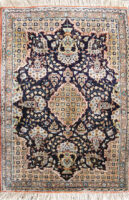
Qum Helsilke
BBM6180cm x 58cmkr. 8.900,- -
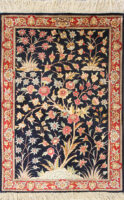
Qum Tæppe
1007288cm x 61cmkr. 12.800,- -

Qum Tæppe
tg08109120cm x 78cmkr. 38.000,- -
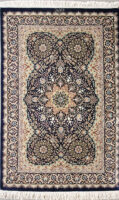
Qum Helsilke
tg07794118cm x 80cmkr. 29.900,- -

Qum Tæppe
10047158cm x 61cmkr. 29.000,- -
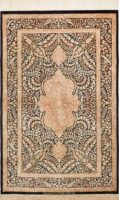
Qum Helsilke Tæppe
tg08108123cm x 80cmkr. 36.000,- -
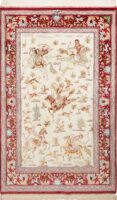
Qum Helsilke Tæppe
10050126cm x 79cmkr. 29.900,- -

Qum Helsilke Tæppe
tg08107189cm x 60cmkr. 38.000,- -

Qum Silketæppe
10050a145cm x 100cmkr. 42.000,- -
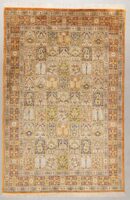
Qum Tæppe
200cm x 130cmkr. 69.000,- -
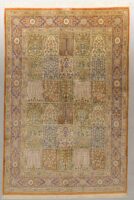
Qum Tæppe
10046200cm x 133cmkr. 89.000,-
Showing all 11 results
Mere om Qum, silke
Pure silk carpets
When you use silk as a raw material in carpet making, you usually do so because you want a particularly good quality product. The smooth silk threads make it easier to produce very fine knots, and the lustrous, smooth material brings out the delicate craftsmanship. Many people think that silk carpets should not be walked on, but they can certainly be used that way even if they are not quite as sturdy as the best wool carpets. Most pure silk carpets are made in Qum, Keshan, Nain and Tabriz. In rare cases, you can also find pure silk carpets in other parts of Iran.
Qum, Qoum, Ghoum, Kum, Ghom
After the town of Maschad, Qum is one of the most important Shiite pilgrimage towns. Reza VIII’s sister, Fatima, is buried here. She was called an angel for her renowned kindness, and shah Safi I built a grave mosque for this saint. Later, this sepulchral monument was rebuilt and enlarged. Shah Abbas I built the mausoleum ‘Hazzat-e-Masumeh’. He is buried there himself together with nine other kings. The dome of the Fatima shrine was gifted by Fath Ali Shah. Today, it is regarded as a fantastic construction with a golden dome and beautifully coloured ceramic mosaics.
The town of Qum is located about 150 km south of Tehran. When we drive there, we often pass the place where Imam Khomeini is buried. It is a large and very beautiful mosque, with golden minarets and a large golden dome. We also pass by the international airport, ‘Imam Khomeini Airport’, continue south and drive down a long stretch along the salt lake ‘Hoze Soltan Salt Lake’. When we drive to Qum, we always start early in the morning in Tehran, in part to avoid the traffic in the city, and in part because this flat stretch becomes very hot. The carpet exhibition in Qum is a newer event. The first carpet weavers came to the town in 1930. It was knotters and merchants from Keshan who started the carpet production in Qum. There was no old carpet tradition to draw from here, and therefore, they knotted patterns from other areas. Even if the Qum carpets have been in the shadow of the Keschan carpets for many years, Qum has established a good reputation due to the beautiful handicraft, the quality materials and their own style that developed over time. Qum is particularly famous for its silk carpets, which are among the finest in the world. My parents have been so lucky as to meet Mr Rashti Zadeh. He is not only famous in Qum, but all over the world, as a knotter and designer. Carpets with his signature are very sought after collectors’ items. They watched his assistant, Mr Emayetullah Asadi, while he was drawing a complicated pattern. This sort of thing is only possible because we are lucky to have good contacts who can open doors that are otherwise shut to most. Mr Rashti Zadeh monitors the entire process from start to end, checks the quality of the silk and the dyeing, which is carried out with natural dyes, and monitors the knotter’s precision on the loom. He explained to my parents that a knot density of 130,000 knots per ft2 is not unusual, but that a bit over 93,000 knots per ft2 is also satisfactory. On the same trip, they also met Mr Nuri, who took them around town to see the work at some of his numerous small workshops. At their first stop, they saw two brothers performing the complicated task of making an octagonal silk carpet, which Nuri had received an order for. It was almost done. The knot density was 83,000 knots per ft2, and the work had taken just over a year for both of them. Nuri said that they still used natural dyes for colouring as well as natural silk without any artificial components for the carpets. Only about 10 percent of the colours are synthetic, referring to the blue colours, but they are of the best quality. He also said that the durability of a silk carpet is far greater than people think. It is a natural material and can certainly be placed on the floor. Silk carpets are not the only kinds of carpets made in Qum. Many of the carpets are knotted with wool on cotton warp. For these, you can often find silk highlights, as they are called. The silk is often used to bring out a pattern or for a motif, like birds or flowers. Qum carpets where wool has been exclusively used in the pile are usually made of finely spun quality wool. They are often called Qum-kurk. However, very few carpets are knotted of genuine kurk wool as it is a delicate and precious material only available in limited quantities (see page 38). Among the town’s recognised masters, you can findJamshidi, Mirmehdi, Ahmadi, Erami, Kazemi, Mohammadi, Kashizadeh, Djeddi and so on. The carpets in Qum often have patterns with birds and flowers, garden patterns (Khristi), shah Abbas’ patterns and Miribota as common motifs. Similarly, you often see the mosque’s mosaic patterns beautifully recreated in the carpets – also called the ‘mehrap pattern’.
Source:
You are reading an extract from the book ‘Oriental Carpets, Knottet with Love’ by Martin Munkholm.
This extensive book about all that is carpets can be borrowed in Danish libraries or be bought following this link: https://belle-rugs.dk/vare/bog-aegte-taepper-knyttet-med-kaerlighed/
The book is published by Muusmann Forlag.
For more info: http://muusmann-forlag.dk/
See video about Qum silk rugs here: https://www.youtube.com/embed/vaEv1oh3zhc
You can find our selection of Qum Silk rugs underneath.
